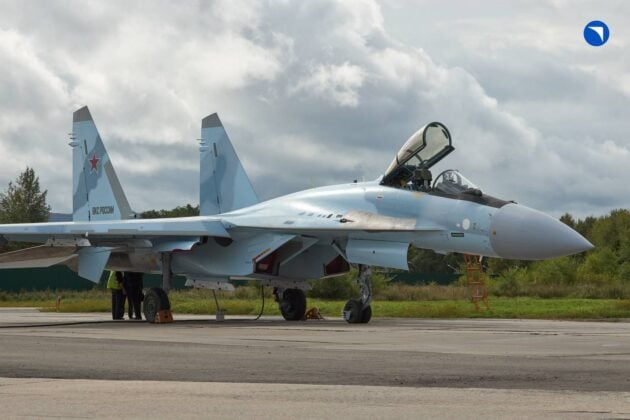
Russia’s state-owned defense conglomerate Rostec said it has delivered another batch of Su-35S multirole fighters to the country’s armed forces, continuing a steady flow of aircraft to operational units despite reported wartime losses.
According to a statement from the United Aircraft Corporation (UAC), part of Rostec, the Su-35S fighters are designed to secure air superiority at long range and in all weather conditions. The company emphasized the aircraft’s role in Russia’s ongoing air operations and its expanding production output.
“We have increased the pace of deliveries of modern combat aircraft for the needs of the Ministry of Defense,” Rostec said. “This also applies to the Su-35S — currently the most capable modern fighter in the world. These aircraft have destroyed numerous enemy aerial targets and are equipped with advanced systems and long-range weapons.”
The company did not specify how many aircraft were included in the latest transfer or which unit received them. However, this appears to be at least the sixth known delivery of Su-35S fighters this year, following earlier shipments in March, May, June, August, and September, according to available data.
Russian military officials have described the Su-35S as a “reliable and versatile system” capable of fulfilling nearly any mission assigned to Russia’s tactical aviation. The aircraft, built at the Komsomolsk-on-Amur Aviation Plant, features thrust-vectoring engines, upgraded avionics, and a radar capable of tracking multiple targets simultaneously.
Developed from the Su-27 platform, the Su-35S serves as one of Russia’s most advanced fourth-generation-plus fighters. It has been heavily employed in combat operations since February 2022, often in roles involving air patrols, standoff missile launches, and escort missions.
Despite continued deliveries, open-source intelligence and Ukrainian defense reports indicate that Russia’s combat aviation fleet has suffered extensive attrition since the start of the full-scale invasion. Verified losses include at least eight Su-35S aircraft, while total confirmed losses across all fixed-wing types exceed 165 destroyed or damaged jets.
The sustained production of Su-35S fighters underscores Moscow’s efforts to replace losses and maintain combat readiness under sanctions that have complicated the import of Western components. Russian manufacturers have repeatedly stated they are substituting foreign parts with domestically produced systems, though analysts remain skeptical about the long-term impact on production quality and output rates.
For Russia’s defense industry, the continued supply of new aircraft carries political weight as well as operational relevance. The Kremlin has positioned Rostec’s manufacturing resilience as evidence that sanctions have failed to impede defense modernization. Deliveries are routinely publicized to project an image of industrial continuity and technological self-sufficiency.
Each new delivery indicates that Russian industry continues to meet at least partial production targets despite sanctions, supply constraints, and combat attrition.